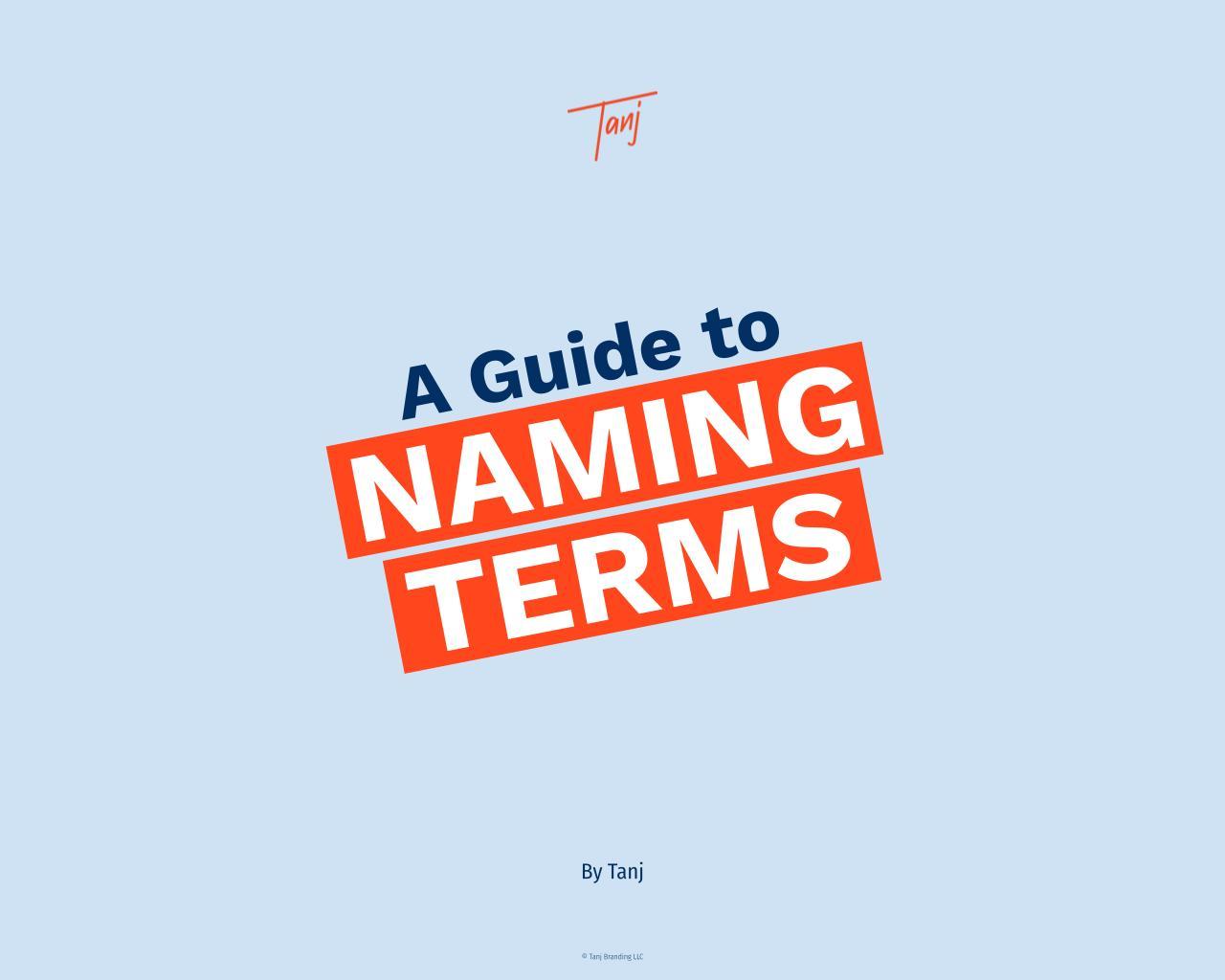We aim to make naming discussions straightforward, clear and fun.
But we admit there’s a bit of jargon that comes with the territory.
We explain it all as it comes up in our naming process — but if you’re the type who likes a solid pre-read before every meeting, here’s a primer on the basic naming terms we use at Tanj.
Here's the text in case it's helpful as well!
- Naming Strategy - A framework used to define the range of names to explore for a project, and to select appropriate names. The core elements of a naming strategy are the construct, expression and tone.
- Construct - The way a name is constructed. The main constructs are real word, composite, simplex, phrasal, and acronym.
- Real Word - A name that can be found in a dictionary. (May be English or any other language.) Examples from Tanj's portfolio include: Coast, Between
- Composite - A name comprised of two real words put together. Examples: Brainforest, OnePass
- Simplex - A coined or invented name; one that cannot be found in a dictionary. Examples: Wii, Bravia
- Blend - A specific type of simplex name created by blending parts of two words together. (Also known as a portmanteau.) Example: Returnal
- Shave - A specific type of simplex name created by shaving letters off of a real word. Examples: Fello, Atrix
- Phrasal - A name made up of multiple words that constitute a phrase. Examples: The Plot Thickens, Few & Far
- Acronym - You know this one. A modern example: RQD
- Expression - The degree to which a name connects to the product/company. We categorize name expressions as descriptive, suggestive or abstract.
- Descriptive - A name that describes what the product/company is or does. Examples: Advancing Cities, MyTeams
- Suggestive - A name that suggests an attribute of the product/company. Examples: SmokeFire, Humanly
- Abstract - A name that has no literal connection to the product/service/offering/company — it may be a metaphor or may be completely arbitrary. Examples: Chestnut, Orium
- Tone - The way a name sounds and feels. Examples: Flowing vs. Firm (Versana // Attain); Fun vs. Serious (Allo // Pursuit); Premium vs. Accessible (Few & Far // MyTeams); Warm vs. Cold (Fello // Atrix)
- Naming Architecture - The way a company’s brand names are organized to support portfolio navigation and brand coherence.
Jill Stanewick is a director of naming & strategy at Tanj.
